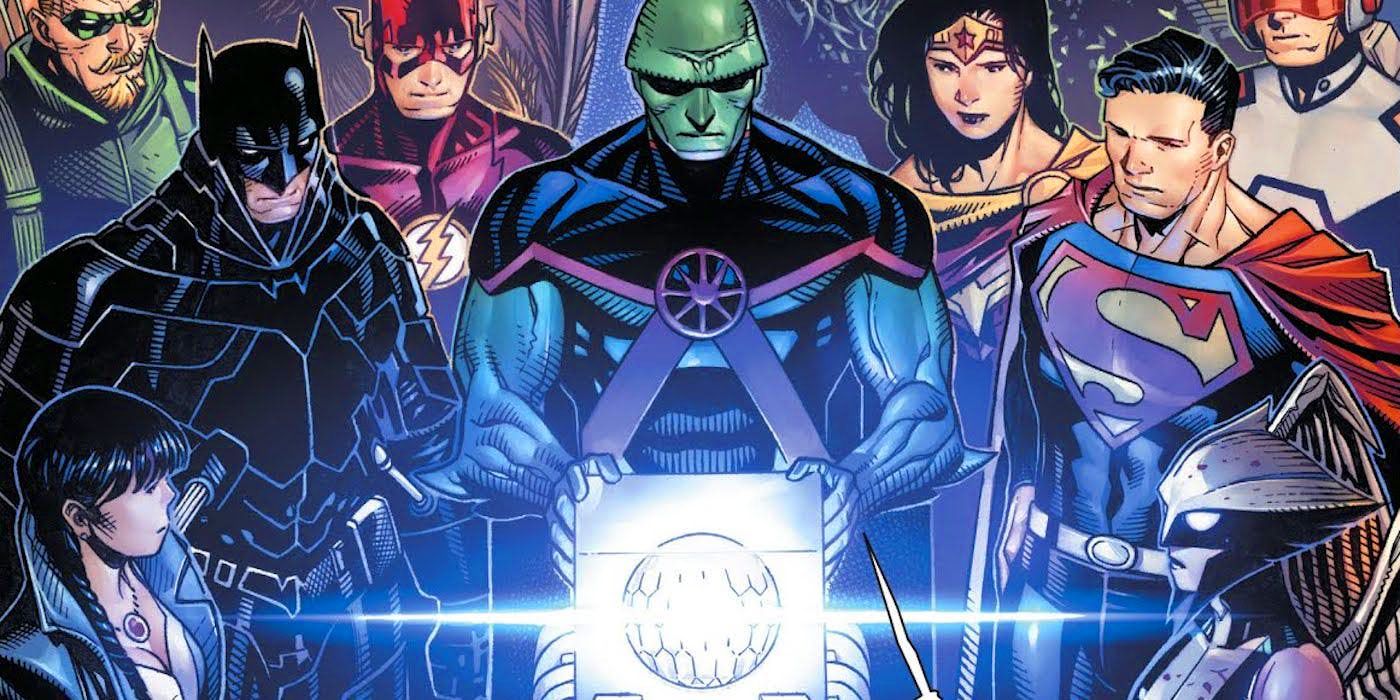 |
| Art by Jim Cheung and Laura Martin |
Since Justice League hit the silver screen in late 2017, fans have been campaigning for the 'Snyder cut': a supposedly sacred version of the film with more characters and a better story, directed solely by Zack Snyder. While Zack's magnum opus has yet to be uncovered, a Justice League story from another Snyder has recently hit the shelves - and it might be better than the hidden director's cut could ever be.
Hot off the heels of Scott Snyder's world-shattering Metal and No Justice events, The Totality kicks off a new saga for the League full of high stakes, world building and character development. The first volume of the new Justice League comic book series pits a new iteration of the all-star team against their greatest foes when "the concentrated essence of the secret source of all things" lands on Earth. It's just as crazy as it sounds, and it's a lot of fun.
 |
| Snyder introduces us to the Hall of Justice |
Snyder throws us into the action with the exposition "There is no warning. It simply breaks free , animates and begins streaking towards its target. Behind it, space-time swirls like road dust", and continues to build the excitement with more eloquent explanations of the world's impending doom. As all great Justice League stories should do, this gives the impression that the book in your hands is almost a piece of modern mythology.
This is furthered by artists Jorge Jimenez, Jim Cheung and Doug Mahnke, whose vibrant and powerful pages throw you into the DC Universe and immersive you into the lives of its greatest heroes. Collectively, they provide some of the best artwork ever printed in a Justice League book, with some panels that are bound to become fan favourites as time goes by.
 |
| What does the arrival of the Totality mean for the world? |
In this series, the League is a nice synthesis of the big screen and cartoon iterations - Aquaman and Cyborg are joined by Martian Manhunter and Hawkgirl, as well as the John Stewart Green Lantern and Barry Allen Flash. The DC Trinity lead the charge as usual, but each character is imperative to the plot. Not since Grant Morrison's JLA have we had a line-up this good, and the added diversity arguably makes it even better.
In fact, The Totality draws pretty heavily from Morrison's days on the League in terms of structure and how Synder packs each page with magnificent ideas. It doesn't quite soar to Morrison's levels, with the concepts being a little less creative and the twists being a little less crazy, but Snyder has undoubtedly still grasped the Justice League formula and put his own spin on it. If you liked Metal, you'll be a fan of this too.
 |
| Luthor is playing with some dangerous toys |
Snyder doesn't leave an awful lot of room for emotional beats in this book, but he still makes sure to develop the characters as the story progresses. Jon Stewart and J'onn J'onzz, the League's greenest members (not in terms of experience, but colour) get the most poignant moments as they deal with the past trauma that the events of the story evoke for them. The villains are also excellently written, particularly Lex Luthor, who manages to keep up with the gods and monsters of the DCU with his unmatched wit and ruthlessness.
The Totality successfully balances being a standalone story and the start of something much greater. It's a fantastic example of what kind of adventure the creative team have in store for us going forward, including a chilling cliffhanger on the final page. If you're a fan of any one of the nine iconic characters on the cover, this is a series you should totally keep an eye on.
Rating: 8/10
The Totality is the first volume of Scott Snyder's Justice League run. It picks up plot threads from previous stories Metal and No Justice, but is still a great starting point on its own. You can find it on Comixology or in any good bookstore.

Comments
Post a Comment